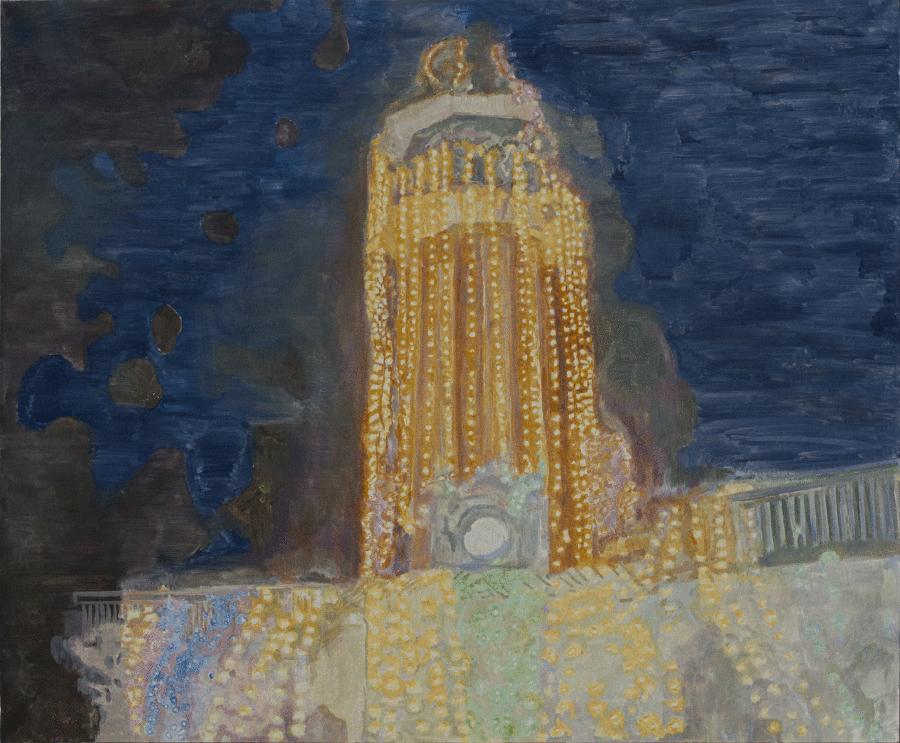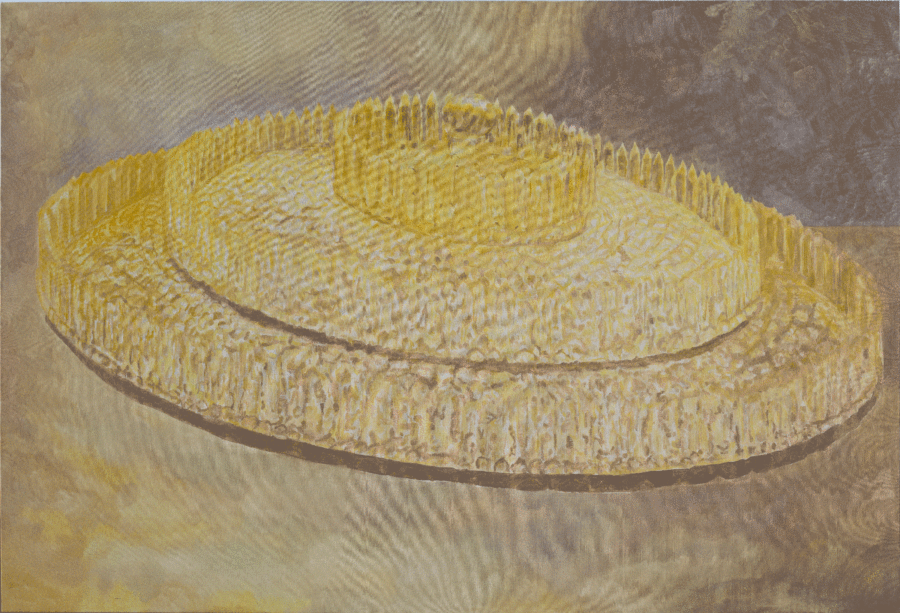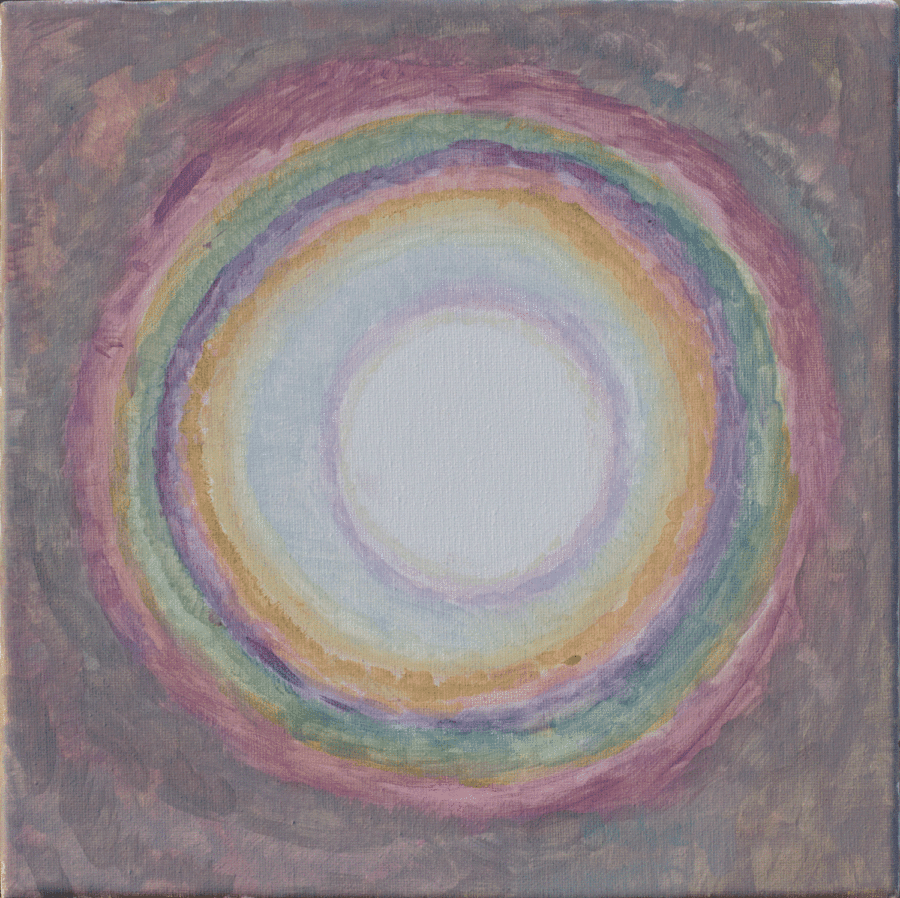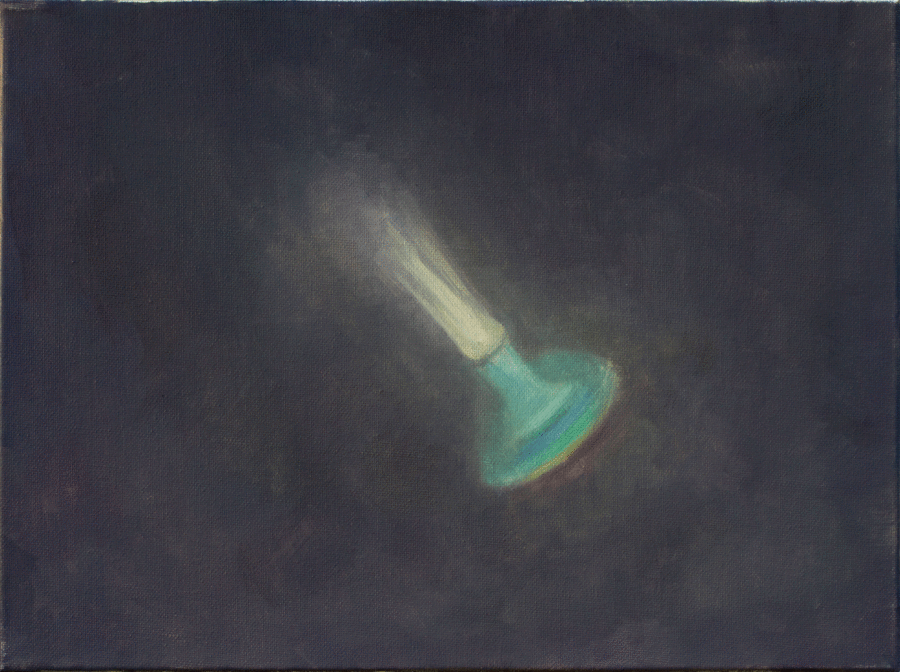Luminous Numinous

There is a hint of aniconism implicit in the title of Inaam Zafar’s second solo show at Sanat Gallery. Without is an enigmatic title, drawing attention as it does, to something beyond what is made apparent by the paintings themselves. Zafar explains that “the word bears an air of isolation, absence, emptiness and incompleteness, and somewhere within the lines — longing. However, the interpretation I induce for this show is — to connect, to be completed.”
Zafar has chosen to illustrate the concept of “connect to be completed” by portraying garlands of illumination that drape over buildings. His canvases rendered in oil show vistas that have been decorated by lights in celebration of a collective experience of that ineffable thing which lies “without.”

Whereas Jungian philosophy emphasised the role of primal archetypes in the creation of the collective unconscious, meaning in Zafar’s depictions seems to exist at two levels: the overt identification with the conscious or recognisable form and then the hidden or implicit which goes beyond the visually recognisable. In ‘Tomb of ever understood,’ a large chandelier is inverted and presented at a tilt like a disc-shaped flying saucer. The three tiers of pendulous light bulbs are upright because of the inversion. It is not clear whether the artist meant to create a visual pun, but the parallel with the circumambulatory nature of worship at the Ka’aba springs to mind.
In ‘Ours,’ garlands of string lights are distinguishable from a surround of misty luminescence against an opaque backdrop. They are strung like cursive writing and tempt one to “read” into their calligraphic suggestiveness.
In ‘The opposite pole,’ string lights cascade vertically from the minaret-like tower. The title does not give away the nature of the building but it could well be a mosque or a shrine. The viewer’s cultural reference adds context to the image, and from the context one can extrapolate that the lights signify a celebratory event. In the large and exuberant painting titled ‘Sentiments as sentiments,’ the artist confirms that his depictions of rose-tinted, radiating lights is inspired by the decorations for Eid-e-Milad-un-Nabi.
Zafar’s paintings in the Without series are convincing lightscapes. They emphasise the central role of light in two ways. Zafar makes the hues paler with the use of white tints. The saturation of the colour decreases while its luminosity is enhanced. The paint is laid on the canvas quite thickly, yet the effect is far from impasto. Rather, the painted surfaces have a chalky glow, as if the canvas is showing through.

The second way light is emphasised is by the dematerialisation of solid form and outline. Zafar’s technique of dematerialisation is very different from that of Monet’s, for example. Monet made over 30 paintings of the Rouen cathedral in the 1890s. The building was an object to study the atmospheric changes of physical light through different times of the day and year. The impressions recorded by Monet’s eye were those of observable reality
By contrast, Zafar’s dematerialisation of form and object is conceptual. He uses brown and neutral shades to create a fuzzy definition. There are no harsh outlines to detract from the effect of emanating light. In ‘Untitled (White),’ almost half the canvas is painted with a horizontal band of opaque white. A building, garlanded with lights, recedes along the top edge of the white band while, at the base, a cluster of figures is discernible. The pictorial elements seem to play a supporting role to the band of light.

The white band is inexplicable. It seems to play a metaphorical role in implying the idea of what lies “without.” Unlike the capture of the fleeting effects of light in time in Monet’s Rouen series, here the idea is to make palpable something that is metaphysical and independent of time.
In the show, there is a series of seven smaller works called ‘Thought of an unknown.’ The series seems to be landscape studies, with the primary intent of looking at form being created by gradations of lightness and darkness. The dark areas are complex juxtapositions of multiple colours that give the semblance of darkness. The bright areas indicate certain objects — perhaps a sail, rocks on the coast, the moon? Their suggestive quality makes them hover between representation and abstraction.
This duality corresponds to the idea of zahir (apparent) and batin (esoteric) that is found in the Quran and in Sufi mystical thought. Inaam Zafar disclaims an overtly religious theme for the series, but the resonances with communal practice and existential belief are left to the viewer’s interpretation.



